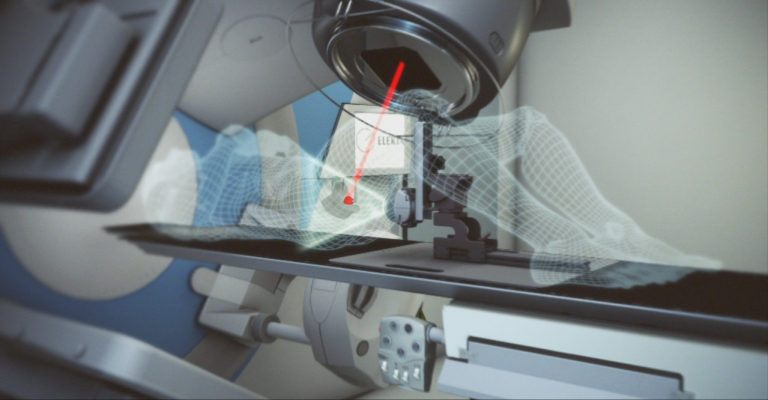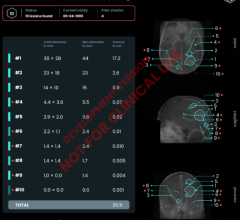
July 22, 2013 — Elekta has received CE marking for its Clarity 4-D monitoring system, permitting European clinics to implement this new way of reducing the uncertainty caused by prostate motion during radiation treatment. Physicians will be able to monitor the motion of the prostate with sub-millimeter accuracy during the delivery of therapeutic radiation beams.
The ability to continuously visualize the prostate and surrounding anatomy during treatment is especially important for clinicians pursuing advanced prostate protocols, such as reduced margin hypofractionated therapy or advanced stereotactic ablative body radiotherapy (SABR).
Continuous target visualization
Four-dimensional monitoring of the prostate with Clarity during treatment offers continuous tracking of the target and imaging of the surrounding anatomy, including the bladder, rectum and penile bulb. Clinicians are keen to avoid this surrounding anatomy to minimize the chance of side effects of treatment such as erectile dysfunction, incontinence or rectal bleeding. Being able to visualize these structures during treatment could potentially enable clinicians to create plans with tighter margins around intended targets, thereby minimizing radiation exposure to healthy tissue.
Clarity 4-D monitoring uses Autoscan acquisition technology to robotically acquire live transperineal ultrasound images of soft tissue anatomy. The noninvasive imaging procedure does not involve any extra radiation dose to the patient and does not require the use of implanted markers.
Cancer patients at Hopital Riviera in Vevey, Switzerland, will soon benefit from the custom technology configuration of their newly acquired Versa HD radiotherapy system and Clarity 4-D monitoring system.
"We are committed to offering the most advanced technologies to our patients, which is why we chose Elekta's Versa HD solution, including Clarity 4-D monitoring for prostate. We will use this system for transperineal imaging of the prostate to align the daily treatment with the prostate's position and eventually monitor that position during treatment. This represents a substantial step forward in treating patients and we look forward to using the technology," says Oscar Matzinger, M.D., radiation oncologist at Hopital Riviera and Centre Hospitalier Universitaire Vaudois (Lausanne, Switzerland).
Physicians at Torino, Italy's University Hospital of Turin also are looking forward to improving prostate tracking with Clarity 4-D monitoring.
"Intrafractional motion management will continue to increase in importance as more sophisticated methods of treating the prostate gain acceptance," says Umberto Ricardi, M.D., radiation oncologist at the center. "Clarity 4-D monitoring will be an important component in realizing the potential these protocols offer us as clinicians."
For more information: www.elekta.com/clarity


 December 11, 2025
December 11, 2025 









